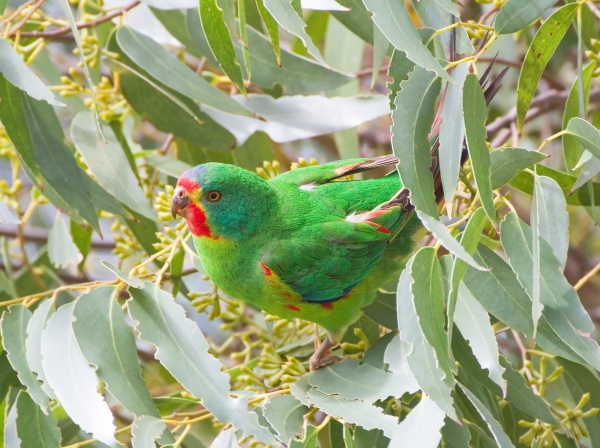Facts About Swift parrot
The swift parrot is a distinctive bird species native to Tasmania, where it breeds before migrating to southeastern Australia for the winter. As the sole member of the genus Lathamus, it is closely related to rosellas but has feeding habits more akin to those of lorikeets. Unfortunately, the swift parrot is in a critical state. As of 2011, fewer than 2,000 mature individuals were estimated to remain in the wild, and experts predict it could be extinct by 2031 due to habitat loss and predation.
First described by John White in 1790, the swift parrot was subsequently placed in the genus Lathamus by René Primevère Lesson in 1830. A 2011 genetic study revealed that this bird diverged from other parrot lineages around 14 million years ago. Measuring about 25 cm in length, the swift parrot is primarily green with striking red and blue markings and is known for its energetic and rapid flight.
Breeding occurs from September to December in Tasmania, where the swift parrot nests in tree hollows and lays between 3 to 5 white eggs per clutch. After the breeding season, the birds migrate across the Bass Strait, reaching as far as southeastern Queensland and Adelaide. Key habitats for the swift parrot have been identified across various regions in Australia.
The swift parrot’s habitat includes forests, woodlands, agricultural lands, and even urban areas. Its diet is diverse, consisting of seeds, grains, fruits, nectar, insects, and pollen. However, the survival of this species hinges on significant conservation efforts. Habitat destruction, loss of nesting sites, and predation by sugar gliders pose substantial threats. Consequently, the swift parrot is listed as endangered under Australian environmental protection laws and as threatened in Victoria. Specific recovery and management actions have been implemented to help protect this endangered bird.
